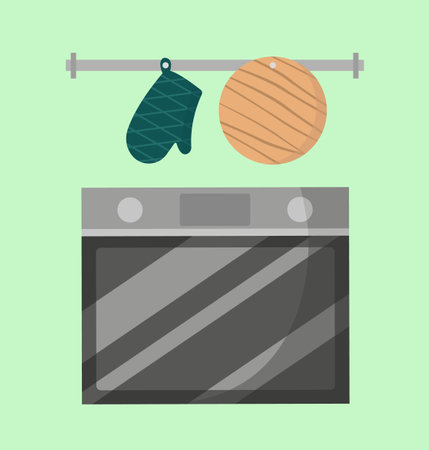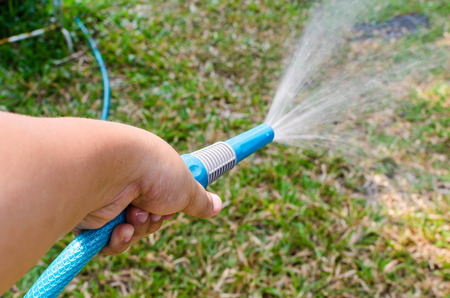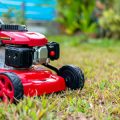Understanding Your Garden Watering Needs
Before choosing a garden hose and reel, its important to first understand the specific watering needs of your outdoor space. Every yard is different, and the right setup depends on a few key factors: the size of your garden, the types of plants you have, and how often you need to water.
Evaluate Your Outdoor Space
Start by taking a good look at your yard or garden area. Is it small and cozy like a patio garden, or do you have a large backyard with flower beds and vegetable patches? The size and layout will help determine the hose length you need and whether a wall-mounted or portable reel makes more sense.
Garden Size vs. Hose Length
| Garden Size | Recommended Hose Length |
|---|---|
| Small (e.g., patios, balconies) | 25–50 ft |
| Medium (e.g., suburban front/back yards) | 50–75 ft |
| Large (e.g., full-size yards, gardens) | 100 ft or more |
Consider the Types of Plants You’re Growing
Certain plants require more water than others. If youre growing vegetables or flowering annuals, they usually need frequent watering. On the other hand, succulents, native grasses, or drought-tolerant plants may only need occasional watering. Knowing this helps you figure out if youll be using your hose daily or just a few times a week.
Determine Your Watering Frequency
Your watering schedule also plays a big role in choosing the right hose and reel. If you water daily or have an irrigation routine, durability and ease-of-use should be top priorities. For more occasional use, you might prioritize compact storage and lightweight materials.
Watering Frequency Guide
| Plant Type | Suggested Watering Frequency |
|---|---|
| Lawn Grass | 2–3 times per week |
| Vegetables & Herbs | Daily or every other day |
| Drought-Tolerant Plants | Once per week or less |
| Potted Plants | Every day in hot weather |
By understanding your garden’s unique needs—from its size to its plant life—you’ll be better equipped to select a hose and reel that works best for your space. This foundation will guide your decisions as you explore features like material type, hose diameter, and reel design in the next steps.
2. Types of Garden Hoses and Their Pros and Cons
Choosing the right garden hose depends a lot on the material its made from. Some hoses are light and easy to handle, while others are tough enough to last for years. Below, we’ll break down the most common types of garden hose materials—vinyl, rubber, and hybrid blends—to help you decide which one works best for your outdoor space.
Vinyl Hoses
Vinyl hoses are often the most budget-friendly option and are great for light-duty watering tasks. They’re lightweight and easy to carry around, making them ideal for small yards or simple gardening jobs. However, they aren’t the most durable choice, especially in extreme heat or cold.
Pros:
- Lightweight and easy to maneuver
- Inexpensive compared to other types
- Good for occasional or seasonal use
Cons:
- Less durable; can kink or crack over time
- Not ideal for heavy-duty use or high water pressure
- Can become brittle in cold climates
Rubber Hoses
Rubber hoses are known for their strength and durability. They can handle high water pressure and resist wear from the sun and rough surfaces. These hoses are heavier than vinyl ones, but they’re built to last, making them a solid choice for frequent gardeners.
Pros:
- Very durable and long-lasting
- Handles hot water and high pressure well
- Less likely to kink or crack
Cons:
- Heavier than other materials
- Tends to be more expensive
- Might be harder to store or coil neatly
Hybrid Hoses (Rubber/Vinyl Blends)
If youre looking for a balance between strength and flexibility, hybrid hoses might be your best bet. These hoses combine the best qualities of rubber and vinyl—lightweight yet tough enough to handle regular use. Theyre also designed to stay flexible in both hot and cold temperatures, which is great if you live in an area with changing seasons.
Pros:
- Flexible in various weather conditions
- Lighter than pure rubber hoses but more durable than vinyl
- Kink-resistant designs available
Cons:
- Slightly more expensive than vinyl-only options
- May not be as rugged as full rubber hoses in industrial use
Quick Comparison Table
| Hose Type | Main Material | Best For | Main Pros | Main Cons |
|---|---|---|---|---|
| Vinyl Hose | PVC (Plastic) | Light use & small gardens | Lightweight, Affordable | Kinks easily, Less durable in harsh weather |
| Rubber Hose | Naturally flexible rubber | Heavy-duty watering needs | Tough, Long-lasting, Handles hot water well | Heavy, More expensive |
| Hybrid Hose | Rubber & Vinyl blend or Polyurethane mix | All-around home use & varied climates | Flexible, Weather-resistant, Easy to handle | Slightly costlier than vinyl-only hoses |
Selecting the right hose type really comes down to how often youll use it, what kind of tasks youre handling, and what kind of climate you live in. If youre dealing with hot summers or freezing winters, durability becomes even more important. Keep these pros and cons in mind as you match a garden hose with your lifestyle and outdoor needs.

3. Choosing the Right Garden Hose Reel
Picking the right garden hose reel can make a big difference in how easy it is to manage your hose and keep your outdoor space tidy. There are several types of reels available, each offering unique features depending on your needs and available space. Let’s take a look at the most popular options: wall-mounted, portable, and decorative hose reels.
Wall-Mounted Hose Reels
Wall-mounted hose reels are a great choice if you want a fixed storage solution that keeps your hose off the ground and neatly stored. These are typically installed on an exterior wall near your water spigot. They’re ideal for homeowners who want a clean, organized look and don’t need to move the hose around much.
Pros:
- Saves floor space
- Keeps hose neatly coiled and off the ground
- Some models offer automatic retraction
Cons:
- Permanent installation required
- Less flexible if you need to use the hose in multiple areas
Portable Hose Reels
Portable reels are perfect for larger yards or gardens where mobility is important. These come with wheels or handles, making it easy to move your hose from one area to another. If you regularly water plants in different parts of your yard or need to reach a driveway or front lawn, this could be the best option for you.
Pros:
- Easy to move around the yard
- No installation required
- Good for large or irregularly shaped spaces
Cons:
- Takes up more ground space
- May not be as stable when pulling out the hose quickly
Decorative Hose Reels
If youre looking for something stylish that blends into your outdoor decor, decorative reels might be the way to go. These reels often come in elegant finishes like bronze or wrought iron and can double as attractive garden features.
Pros:
- Adds aesthetic value to your yard or patio
- Often includes storage features like covered boxes or pots
- Can be both wall-mounted or freestanding depending on design
Cons:
- Might be more expensive than basic models
- Not always as durable under heavy use
Comparison Table: Types of Garden Hose Reels
| Type | Main Benefit | Best For | Drawback |
|---|---|---|---|
| Wall-Mounted Reel | Saves space and keeps hose tidy | Permanently placed gardens or patios | Lack of mobility, requires installation |
| Portable Reel | Flexibility to move around easily | Large yards or multiple watering zones | Takes up more ground space, less stability when moving fast |
| Decorative Reel | Aesthetic appeal with function | Stylish outdoor spaces or patios with visible storage needs | Tends to cost more, may not handle heavy use well |
No matter which type of garden hose reel you choose, make sure it matches both your outdoor setup and how you plan to use your hose. Think about where you’ll store it, how often you’ll move it, and how much hose length you need to manage comfortably.
4. Key Features to Look For
Choosing the best garden hose and reel for your outdoor space means looking beyond just color and price. To make a smart purchase, you’ll want to pay attention to some key features that impact performance, durability, and ease of use. Here are the most important things to consider:
Hose Length
The length of your hose should match the size of your yard or garden. A hose thats too short will limit your reach, while one thats too long can be bulky and hard to store. Heres a quick guide to help you pick the right length:
| Yard Size | Recommended Hose Length |
|---|---|
| Small (Patio or Balcony) | 25 ft |
| Medium (Typical Backyard) | 50 ft |
| Large (Front + Backyard) | 75–100 ft |
Hose Diameter
The diameter affects water flow. Most garden hoses come in 1/2″, 5/8″, or 3/4″ sizes. For most American households, a 5/8-inch hose offers a good balance between water pressure and flexibility.
| Diameter | Best For |
|---|---|
| 1/2 inch | Lighter tasks like watering plants in containers |
| 5/8 inch | General lawn and garden use |
| 3/4 inch | High water flow needs like filling pools or washing cars |
Kink Resistance
No one likes a hose that kinks every time you move it. Look for hoses labeled as “kink-free” or “kink-resistant.” Reinforced materials and layered construction help reduce annoying twists and bends.
UV Protection
If your hose sits in the sun a lot, UV protection is a must. UV-resistant hoses last longer because they don’t crack or become brittle from sunlight exposure.
Leak-Proof Fittings
The fittings on both ends of your hose should be solid and leak-proof. Brass fittings are more durable than plastic ones and less likely to leak or corrode over time.
Quick Tip:
If youre tired of leaks at the spigot, look for crush-proof brass couplings with rubber washers inside—they provide a tighter seal.
Bonus: Features on the Reel Itself
The reel is just as important as the hose. Look for features like:
- Automatic rewind: Makes winding up the hose effortless.
- Wall-mounted vs. portable: Choose based on whether you want it fixed in one spot or easy to move around.
- Storage capacity: Ensure the reel can hold the full length of your hose.
Paying attention to these features will help you choose a hose and reel combo that fits your needs, saves time, and lasts through many gardening seasons.
5. Maintenance Tips and Storage Best Practices
Keeping your garden hose and reel in good shape doesn’t have to be complicated. With just a little care, you can extend the life of your hose and reel for many seasons to come. Here are some practical tips on cleaning, storing, and maintaining your garden gear.
Cleaning Your Garden Hose and Reel
Dirt, debris, and moisture buildup can cause wear and tear over time. Regular cleaning helps prevent mold, mildew, and rust.
Steps for Cleaning:
- Rinse the hose: Use clean water to flush out any dirt inside and outside the hose.
- Wipe down the reel: Use a damp cloth to clean off dust or mud from the reel housing.
- Check for clogs: Remove any debris from nozzles or connectors.
Winter Storage Tips
If you live in an area with cold winters, storing your hose properly is essential to avoid cracking or damage from freezing temperatures.
Winter Storage Checklist:
| Task | Why Its Important |
|---|---|
| Drain all water from the hose | Prevents freezing and expansion that could crack the hose |
| Disconnect from faucet | Avoids potential pipe damage during freeze-thaw cycles |
| Coil the hose loosely | Keeps it from kinking or becoming misshapen |
| Store indoors or in a shed/garage | Protects against harsh winter weather conditions |
Routine Maintenance Tips
Inspecting your equipment regularly helps you catch small issues before they become big problems.
What to Look For:
- Leaks at connections: Check washers and tighten fittings as needed.
- Kinks or cracks in the hose: Replace damaged sections to keep water flowing smoothly.
- Smooth reel operation: Lubricate moving parts if the reel feels stiff or squeaky.
- Nozzle condition: Make sure spray settings work properly; replace if corroded or broken.
A little upkeep goes a long way. By following these simple maintenance steps, youll get more use out of your garden hose and reel while keeping your outdoor space looking its best year-round.


